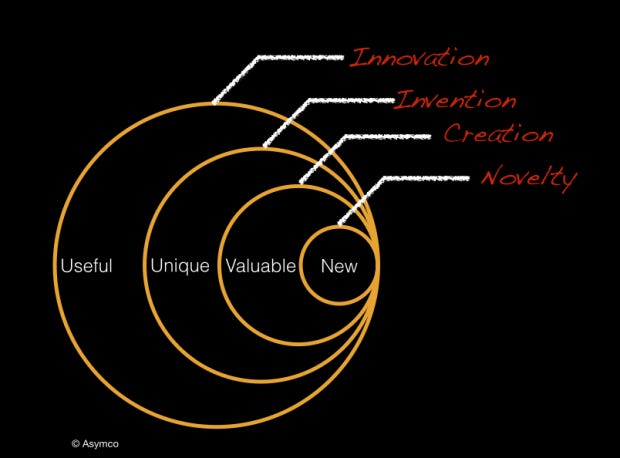"Innoveracy", Finding Awe
Innoveracy
A couple of weeks ago, a friend asked for my opinion about Meta’s historical struggle of building “new products” (he sent me this tweet). I mostly explained to him that going from 0 to 1 repeatedly is a challenging task for any incumbent, and I also reminded him that when Zuck acquired Instagram, Instagram had thirteen employees and literally zero revenue. Meta basically took the business from zero revenue to the highest revenue generating consumer internet business since Facebook itself (yes, even more than YouTube and Netflix).
Last week, I came across this piece by Horace Dediu (h/t SharpTech) who did a better job more than a decade ago in differentiating “innovation”. Dediu coined a new term “Innoveracy” which he defined as “the inability to understand creativity and the role it plays in society”. If I read it earlier, I would have probably just sent this piece to my friend. From the piece:
The definition of innovation is easy to find but it’s one thing to read the definition and another to understand its meaning. Rather than defining it again, I propose using a simple taxonomy of related activities that put it in context.
- Novelty: Something new
- Creation: Something new and valuable
- Invention: Something new, having potential value through utility
- Innovation: Something new and uniquely useful

The piece further explained:
Note that the taxonomy has a hierarchy. Creations are novel, inventions are creations and innovations are usually based on some invention. However inventions are not innovations and neither are creations or novelties. Innovations are therefore the most demanding works because they require all the conditions in the hierarchy. Innovations implicitly require defensibility through a unique “operating model”. Put another way, they remain unique because few others can copy them.
To be innovative is very difficult, but because of the difficulty, being innovative is usually well rewarded. Indeed, it might be easier to identify innovations simply by their rewards. It’s almost a certainty that any great business is predicated on an innovation and that the lack of a reward in business means that some aspect of the conditions of innovation were not met.
It’s thought provoking, and of course, the challenge of such taxonomy is you may find many examples in real world that may violate the specific details, but that doesn’t necessarily negate the core essence of the piece.